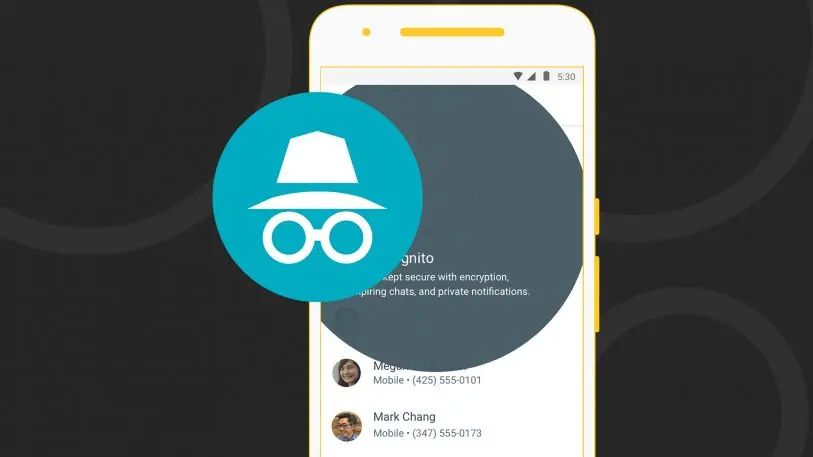Google Allo is done. Announced in 2016, it was Google’s big attempt to build a Google chatbot right into your text message conversations. Allo’s death signals something important to the tech industry: Nobody wants a chatbot listening in on their intimate conversations–especially when that chatbot is near useless.
Allo did all the things you’d expect from a new messaging app: It incorporated richer fonts and multimedia tools, much like competitors iMessage or WhatsApp. But its coup de grâce against its competition was supposed to be The Power of Google Itself, with Search manifesting itself within the app as an omnipresent third wheel that was always listening, always ready to pipe up at moment’s notice to help find a restaurant and book reservations.
[Photo: Google]
That third wheel was powered by the Google Assistant, which Rebecca Michael, then Google’s head of marketing of messaging products, described as “an ongoing dialog between you and Google that helps you get things done in your world” as she debuted Allo onstage in 2016. What did that mean in a practical sense? More or less, I’d say “let’s go out to dinner,” and suddenly Allo would prompt me with a pop-up button: “DID SOMEONE SAY ITALIAN FOOD!?!?!?”
I suspected Allo might not be long for this world, and two years later, the experiment is over. The company announced it would instead refocus on the Android Messages app (to which it has added some Allo features) and stop all support for the app in March. It’s a decision that illustrates some of the reasons the chatbot craze hasn’t lived up to the hype.
Earlier this year, The Verge reported that not enough people were using Allo. It’s as if nobody wanted Google listening and responding to their private chats! In fact, to avoid this eavesdropping, you had to use Allo’s “Incognito Mode.” That’s right, you had to tell Google, “Hey, I’d like this conversation between me and my husband to be private, thanks!” While plenty of smartphone users are willing to give up some of their privacy for a useful feature, the promise of Allo interrupting conversations seemingly wasn’t enough to get people to download and commit to the app. It depended on sucking up messaging data to power functionality that wasn’t really all that useful. It was a bad equation for users.

Google isn’t alone in Allo’s failings. The whole industry was in a chatbot frenzy for a while. Facebook M–its much-heralded smart assistant that could deliver you goods or do just about anything else for you–was also announced in a 2016 keynote only to be discontinued by the start of 2018. Allo and M share eerie parallels, both in chronology and story: Silicon Valley company with limitless resources and half a duopoly in online advertising builds automated subordinate to help you find things and probably sell you stuff. Instead, users opted for the simplicity of talking to other people. Who woulda thunk?
It doesn’t help that since 2016, the sheen of Silicon Valley has been tarnished by scandals like Cambridge Analytica, which offered many users the first true demonstration of how social media platforms could use their data to damage society itself. My stomach churns when someone contacts me on Facebook Messenger. It’s as if a friend invited me to their birthday party at a restaurant I hate. I have to show up, but don’t make me shake hands with the chef I saw letting Putin spit in my amuse-bouche! The last thing I want at this point is to share any more data with a strong-arming platform such as Facebook.
Yet I can’t help but suspect the bigger reason many chatbots have failed is that is that they overpromised and underdelivered. Great user interfaces–for any product–offer people just a few clear options on purpose. You can close the window. Click the like button. Swipe the message. They communicate finite possibilities because, by design, software can only do finite things.
Chatbots–and the very premise of conversational interfaces–suggest limitless possibilities, but they have trouble clearly communicating what they can do in the first place. Oh, you can “play a game,” Allo? Great! Does that mean you can clean up dog crap for me? Can you advise me on my deepest, most drunken existential crises, Siri? Can you scratch the middle part of my back, Alexa? Describing these interactions as “conversations” to users is a massive oversell. It promises possibilities that chatbots haven’t fulfilled, because the software isn’t there yet–and at least in terms of back scratches, may never be.
Just look at Smart Reply, one feature of Allo that still exists in Gmail and Google’s Messages app. It communicated clearly and concisely what it could do, and how it could save users time. Building upon some of the same technologies found in Allo, Google no longer wants to sell us on chatbots. It’s turning us into them, instead.
Recognize your brand’s excellence by applying to this year’s Brands That Matter Awards before the early-rate deadline, May 3.